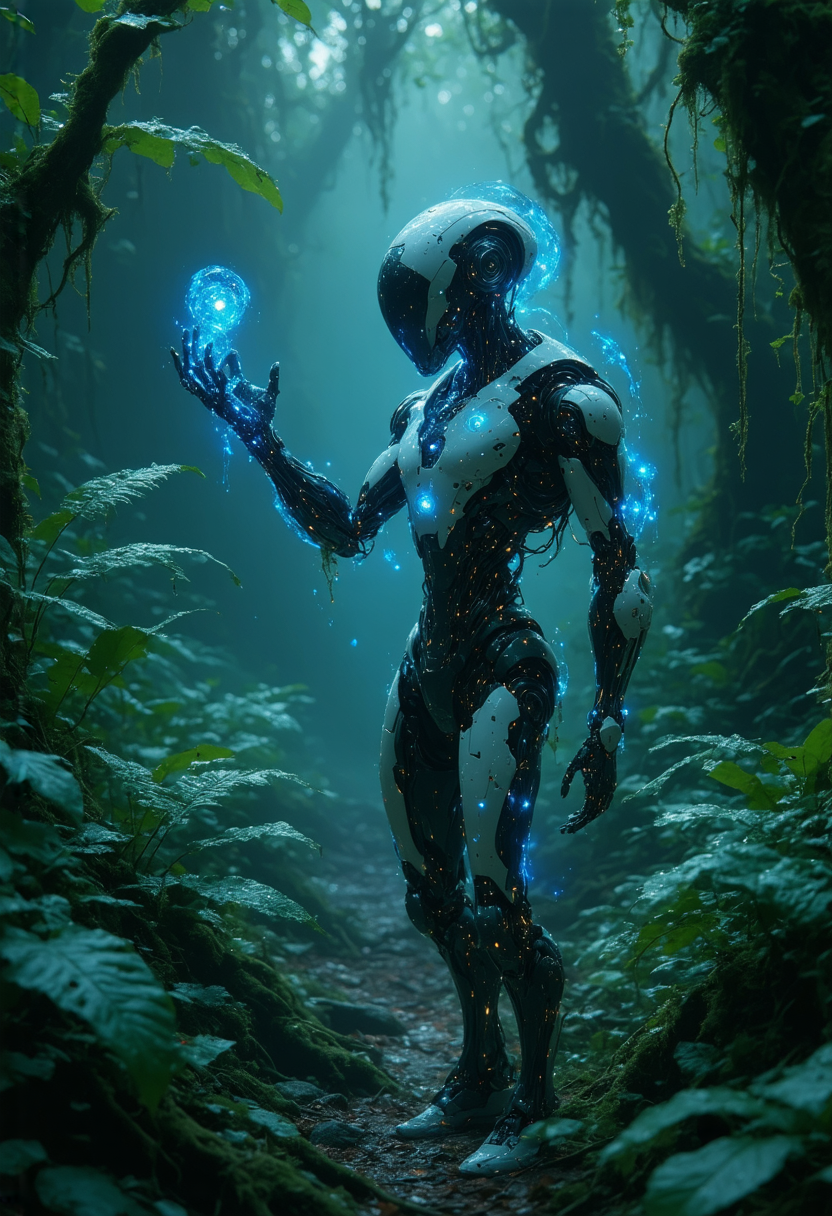In a bioluminescent forest clearing, a sleek android with organic tendrils intertwining its metallic frame stands with one arm raised, fingers splayed in wonder. Its synthetic eyes, glowing with an ethereal blue light, reflect a curious gaze as it observes a pulsating, alien symbiont hovering before it. The symbiont, a swirling mass of iridescent tentacles and translucent membranes, emits a soft, pinkish glow that bathes the scene in an otherworldly ambiance. Wisps of bioluminescent spores drift through the air, creating a dreamlike atmosphere. The android's smooth, polished surface contrasts with the wild, organic growth surrounding it, while subtle hints of circuitry peek through gaps in its exoskeleton. Delicate ferns and exotic flora frame the scene, their leaves shimmering with dew- like droplets of luminous fluid. The entire composition exudes a sense of wonder and discovery, blending the mechanical and the organic in a harmonious dance of form and function. Style inspired by the surreal biomechanical art of H. R. Giger, the ethereal landscapes of Roger Dean, and the futuristic visions of Syd Mead
